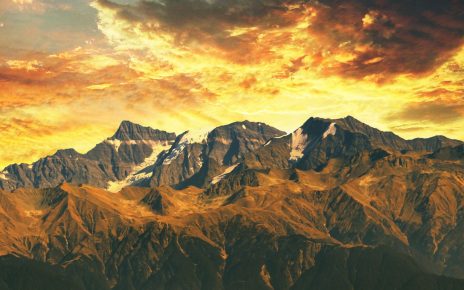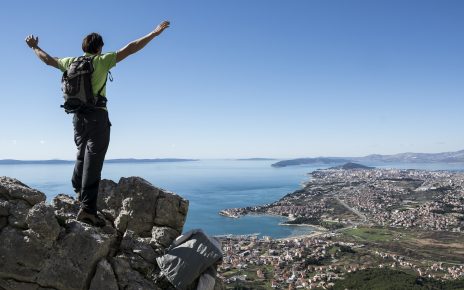The city of Dessie boasts a population of about 100,000. It is in a very attractive setting, sitting about 2600 meters high amidst tree-clad hills. On a sunny day, Dessie can be quite glorious. On a rainy day, it’s dismal.
Because of its geographical position, Dessie is densely populated and crowded. It is squeezed between the attractive hills, and therefore has no room to grow. As a result it is a thick mass of rusted corrugated iron roofing, with streets constantly filled with crowds. The lack of growing space was apparently the reason that Dessie was passed over in favour of Bahir Dar as the Capital for Amhara Region, and has become more of a backwater Zonal Capital.
There are a few nice sights in Dessie. The church of Bete Maryam is on top of the hill which you pass as you enter Dessie from the south. There is a beautiful stand of juniper trees there preserved in the grounds of the church – which gives an idea of what the forests must have been like before the ubiquitous eucalyptus. The church itself is a fairly standard tukul style, but the setting is spectacular. From the hilltop you get views not only over Dessie, but over the deep valley to the South. The valley is gated by unusually shaped rock outcrops.
Walks near Dessie
The ridge of mountains which borders Dessie on the North end is extremely inviting. I once walked up Mount Tossa with some colleagues – the peak furthest to the West. You go to the west end of town, then drive part way up and walk the remaining in about one hour. At the top you walk through the picturesque fields of barley and wheat, to obtain views in all four directions. Looking East you can almost see the Afar lowlands from there.
Another walk I enjoyed was on the road North of Dessie 5 km to the next town of Tetu. Just outside of Dessie you walk by a number of burned-out tanks which attest to the heavy fighting between the EPRDF and the Derg in 1990 for possession of the city. It is very pretty land, with deep valleys falling away from the cliffside road. There was a bit of bother with kids, but nothing serious. As I had turned around and was walking back I pulled out a chocolate bar and gave it to one of the kids to share with the others. Predictably he immediately ran off with all the other kids in pursuit, and I was finally left alone.
Downtown
Downtown Dessie is so densely packed it is a bit of a nightmare. There are plenty of Derg era markings – like the gates over the roads with the red stars and the paintings on the walls of globes and doves and strong armed people. My favourite murals are the ones at the circle as you enter Dessie from the South, with my personal hero Emperor Tewodros, and his cannon ‘Sebastobol’. There are plenty of shops, and an extensive, if basic, market.
Dessie has a lot of beggars. It is the hub of the hunger prone area of South Wollo, so that during the hungry times of the year the hordes descend anxious for assistance. In March and April of 1999 busloads of poor peasants could be seen heading to Addis every day in desperate search for food and work. The streets were literally clogged with beggars. With the start of rain most of the farmers were bussed back to the countryside by the government and resumed eking out a living off the land. Sometimes the streets are actually quite clear, with the explanation that officials have swept up the street people and taken them to the prison town of Shoa Robit, 170 kms south.
There are few places where a ferengi hears the tiresome ‘you, you’ quite so often, or must contend with such persistent and numerous beggars. It is overwhelming at times. I hand out whatever change and one birr bills I have, then shrug helplessly. One persistent old lady continued to ask me for one birr when I had run out, and one of my Ethiopian colleagues handed me a coin to give to her. I tried to give her the coin, which she refused, then when I started to pull my hand back she grabbed the coin and gave my finger such a twist that I have had great respect for the strength of old ladies ever since.
There is also a tale of a ferengi woman, who was so struck by the poverty of Dessie that she gave a beggar a 50 birr note, then others ten birr each. News spread so quickly that soon she was besieged inside her hotel by a crowd of beggars. An Ethiopian colleague suggested that he should get some one birr notes, which he did, and began distributing them to the crowd. He was almost mobbed, because the beggars demanded that the ferengi woman who gave out 50 birr notes come out!
The nightclubs and Asmari bars of Dessie are quite renowned. Asmari singers, with their one stringed instruments, are incredibly clever at creating lyrics. Once they know your name, then you will be treated to an Amharic praise song about your generosity, intelligence, sexual appetite or whatever other compliments they can think of. You are expected to give a generous tip. However, local officials seem to discourage ferengis from going to most nightclubs, especially on the west end of town, because they are considered too rough.
There are several good hotels in Dessie. The Ambaras is right on the main drag, with a big iron fence and attractive bright white front. The rooms are basic but fine, there is a nice bar with constant entertainment from CNN, an okay ferengi food restaurant and a very nice National Food restaurant around the back. They used to have entertainment there a lot, but it has become more occasional, although they still have some of the best doro wot (chicken) I’ve tasted.
Just west of the Ambaras on the opposite side is the older Faseka hotel, which has the faded glory characteristic of most government owned establishments. The rooms are basic but okay, although water is occasional. The Qualiber Hotel, which is known locally as the EDU in reference to its elitism, has a nice restaurant and rooms at good prices. It is on the second major road in town, a few blocks above the main drag.
Also on the second road is the old palace of Ras Mikael, the ruler of Wollo at the turn of the century. A Moslem who converted to Christianity and changed his name from Muhammed Ali, he is most famous as the father of Lij Iyasu, the short term emperor who was overthrown by the intrigues of Haile Selassie. The palace is run down and not easily accessible, and therefore is not being exploited as a tourist spot.
As you get to the edge of town on the North side there is a big mosque which has recently been completed. I watched it being built over a period of two years, with one long delay after the collapse of a dome which killed two. South Wollo is one part of the Amhara region which is predominantly Moslem, although there are also a lot of Christians. From the mosque, there is an attractive looking walk over some of the hills which skirt the Southern end of Dessie.
As I said at the beginning, Dessie is not nice in the rainy season, and I avoid it if possible from June to September. It can get foggy as hell. Once I was driving at night with visibility so bad that only instinct led me to stop at one point and get out and look where I was going. The front right wheel was overhanging a drop of 5 feet. Because of the altitude it can also be freezing in Dessie from Dec. to February. So there are only brief interludes where Dessie is sunny and warm enough to really enjoy.





